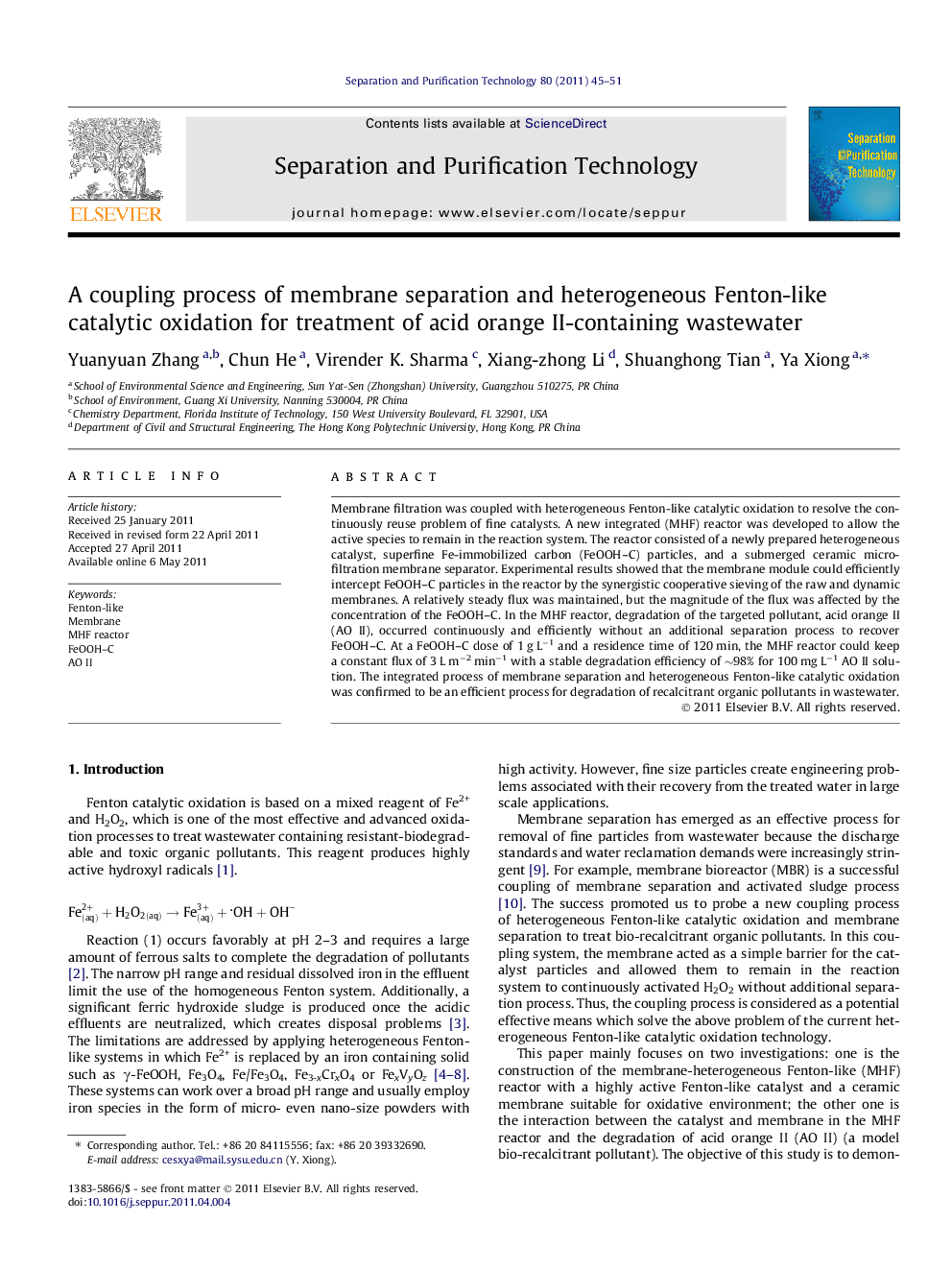| Article ID | Journal | Published Year | Pages | File Type |
|---|---|---|---|---|
| 642572 | Separation and Purification Technology | 2011 | 7 Pages |
Membrane filtration was coupled with heterogeneous Fenton-like catalytic oxidation to resolve the continuously reuse problem of fine catalysts. A new integrated (MHF) reactor was developed to allow the active species to remain in the reaction system. The reactor consisted of a newly prepared heterogeneous catalyst, superfine Fe-immobilized carbon (FeOOH–C) particles, and a submerged ceramic micro-filtration membrane separator. Experimental results showed that the membrane module could efficiently intercept FeOOH–C particles in the reactor by the synergistic cooperative sieving of the raw and dynamic membranes. A relatively steady flux was maintained, but the magnitude of the flux was affected by the concentration of the FeOOH–C. In the MHF reactor, degradation of the targeted pollutant, acid orange II (AO II), occurred continuously and efficiently without an additional separation process to recover FeOOH–C. At a FeOOH–C dose of 1 g L−1 and a residence time of 120 min, the MHF reactor could keep a constant flux of 3 L m−2 min−1 with a stable degradation efficiency of ∼98% for 100 mg L−1 AO II solution. The integrated process of membrane separation and heterogeneous Fenton-like catalytic oxidation was confirmed to be an efficient process for degradation of recalcitrant organic pollutants in wastewater.
Graphical abstractFigure optionsDownload full-size imageDownload as PowerPoint slideHighlights► A new Fenton-like catalyst FeOOH–C with high catalytic activity was prepared based on pericarp of pomelo and FeSO4. ► A membrane-heterogeneous Fenton-like catalytic reactor was developed to degrade the resistant-biodegradable organic pollutants. ► Treatment capacity of FeOOH–C in the MHF reactor was estimated to be more than that in a common reactor.
